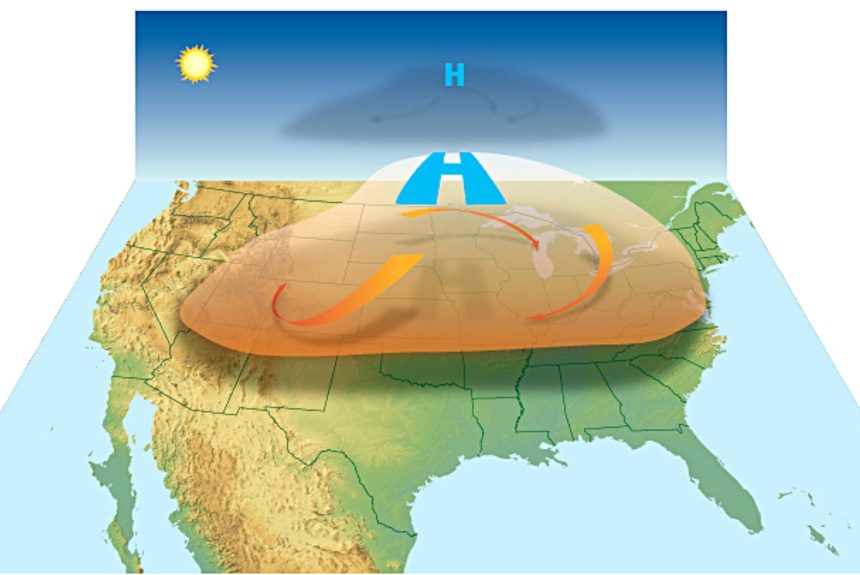The record-breaking heat that started in late June 2021 has enveloped Oregon, Washington and British Columbia, Canada. Oregon and Washington have reached highs of up to 117°F (47.2°C) in some parts of the state, breaking their historical record by 9 degrees.
In British Columbia, Canada, temperatures reached an astonishing 121°F or 49°C. Lytton, Canada, which has seen these scorching temperatures, has broken its national record in 3 consecutive days.
Heatwaves caused by Climate Change
CBS News reports that climate scientists from the World Weather Attribution network attribute this extreme heat to climate. According to them, this intense heat is unusual and “virtually impossible” without climate change.
Through cutting-edge technology, these scientists could determine the degree to which climate change caused this extreme heat. They concluded that the chances of this magnitude of heat waves occurring are almost impossible without climate change.
Climate change also increases heatwave events at least 150 times, making it nearly 4 degrees hotter than it would have been during the pre-industrial period.
The scientists also project that if the earth keeps warming and we go over the 2°C Paris Agreement warming limit by 2050, then heat waves of this magnitude will occur every 5 to 10 years, not every 1000 years as they used to.
Heat Domes
At the heart of the intense heat that engulfed the Pacific Northwest are “heat domes”, and climate change increases the frequency of extreme heat domes, pumping them higher into the atmosphere and blowing more air into them like a hot-air balloon, the Washington Post reports.
The article explains what a heat dome is and how it works.
“Heat domes are sprawling zones of strong high pressure, beneath which the air is compressed and heats up. They are a staple of summertime and the source of most heatwaves.”
“Hot air masses, born from the blazing summer sun, expand vertically into the atmosphere, creating a dome of high pressure that diverts weather systems around them. As high-pressure systems become firmly established, subsiding air beneath them heats the atmosphere and dissipates cloud cover. The high summer sun angle and cloudless skies further heat the ground. But amid drought conditions, the vicious feedback loop doesn’t end there. The combination of heat and a dry landscape can work to make heat waves even more extreme. With very little moisture in soils, heat energy that would normally be used on evaporation — a cooling process — instead directly heats the air and the ground”
Jane Wilson Baldwin, a postdoctoral researcher at Lamont-Doherty Earth Observatory at Columbia University, says that when land is already dry, there is no moisture to cool itself through evaporation. This makes the surface hotter and strengthens the heat dome further, creating a feedback loop.
She adds that increasing temperatures caused by the burning of fossil fuels worsens and prolongs heat domes.
According to CBS News, the intensity of heatwaves this summer even surprised some scientists, who labelled this year’s heatwave as “unprecedented” and “out of bounds.”
Scientists say they could not have predicted a heatwave of this magnitude to happen this year because their temperatures usually rise about two times faster than global mean temperatures. Without climate change, the chances of it happening is once per 150,000 years.
Dr Friederike Otto of Oxford University, a co-author of a study that examined the causes of the recent heatwaves in the Pacific Northwest, including Vancouver, Canada, Seattle, and Portland, says that a heatwave of this magnitude is only expected to occur at higher levels of global warming.
To conclude, the study analysed two sets of data. The first looks at historical data and how likely a heatwave of this kind would occur based on it. The second one looks at the chances of heat waves without climate change.
In both cases, they find that this event “was far beyond the bounds of a normal climate — meaning it would be virtually impossible without the human influence on climate.”
But even with our current increase in global temperature, a heatwave of this kind should only happen once every 1000 years, so either this year’s event is just “bad luck” or science still hasn’t fully understood the extent to which climate change is impacting such extreme weather events. The article says some of the study’s authors favour this conclusion.
Adapting to Heat
USA Today reports that States are developing long-term plans to adapt to future heat waves. They are also considering creating infrastructure so different agencies can work together to address climate change.
States are looking to address the impacts of high temperatures on mental and physiological health and the potential to cause interpersonal conflict. The most direct effect is heat stress, which can impact the human body, especially during hot nights.
The article says that states have transitioned from preparing for climate change as a future problem to a problem affecting them now, and its impacts will only continue to intensify.
Source Citation:
Berardelli, J. (2021, July 8). Pacific Northwest heat wave would have been “virtually impossible” without climate change, experts say. CBS News. Retrieved from https://www.cbsnews.com/news/climate-change-heat-wave-pacific-northwest/
Samenow, J. & Galocha, A. (2021, July 10). The science of heat domes and how drought and climate change make them worse. The Washington Post. Retrieved from https://www.washingtonpost.com/weather/2021/07/10/heat-dome-heat-wave-faq/
Vargas, S. (2021, July 8). Pacific Northwest heat wave shattered temperature records. Is another dangerous weather developing this weekend? USA Today. Retrieved from https://www.usatoday.com/story/news/nation/2021/07/08/pacific-northwest-heat-wave-weather-health-concerns/7898170002/
Formation of a heat wave via a heat dome by U. S. National Weather Service/National Ocean Service 2021 Western North America heat wave. (2023, December 18). In Wikipedia. https://en.wikipedia.org/wiki/2021_Western_North_America_heat_wave
Formation of a heat wave via a heat dome by U. S. National Weather Service/National Ocean Service – https://www.weather.gov/jetstream/hi and https://aambpublicoceanservice.blob.core.windows.net/oceanserviceprod/facts/heatdome.jpg, Public Domain, https://commons.wikimedia.org/w/index.php?curid=18826480



Leave a Reply